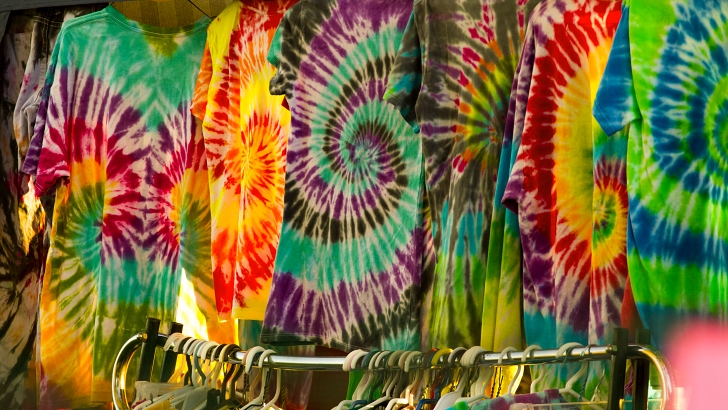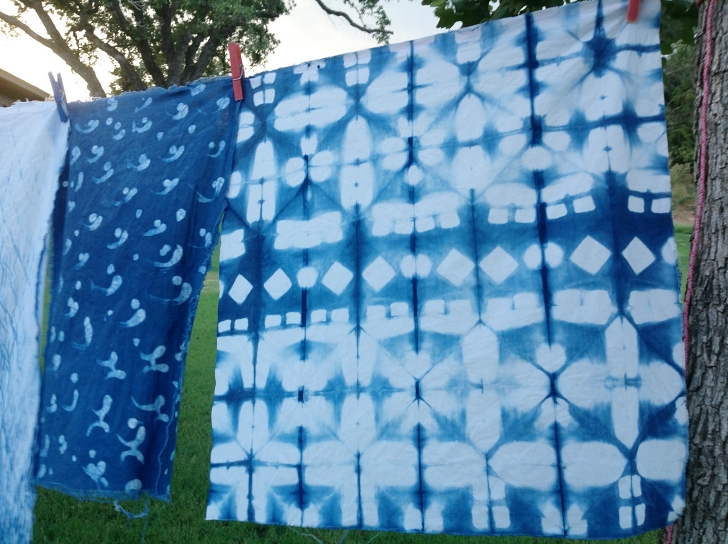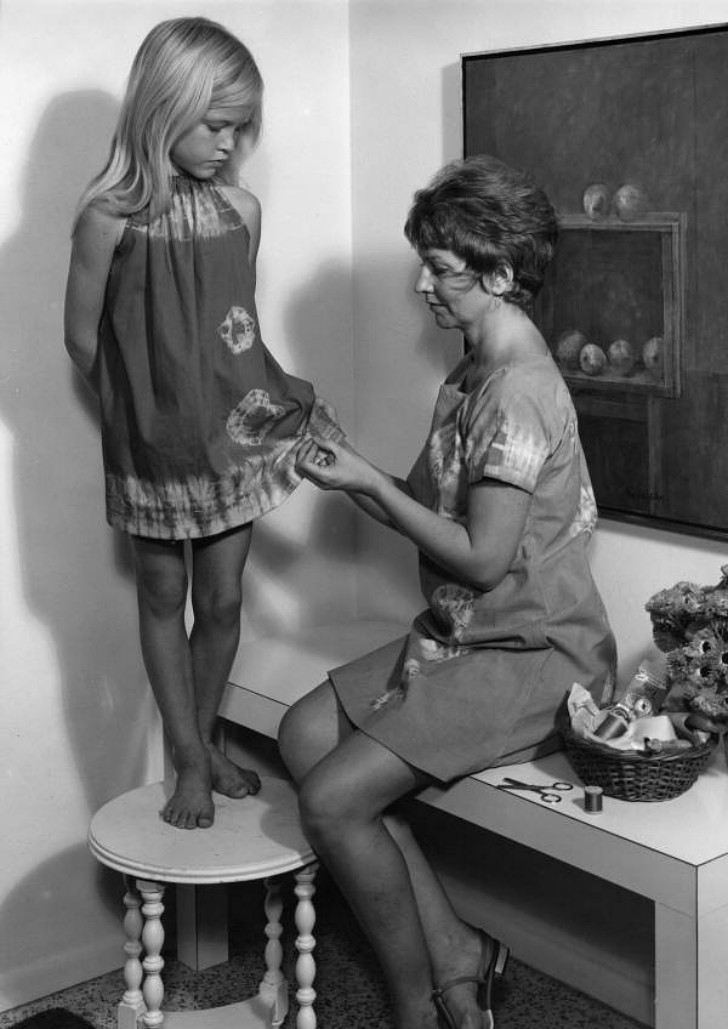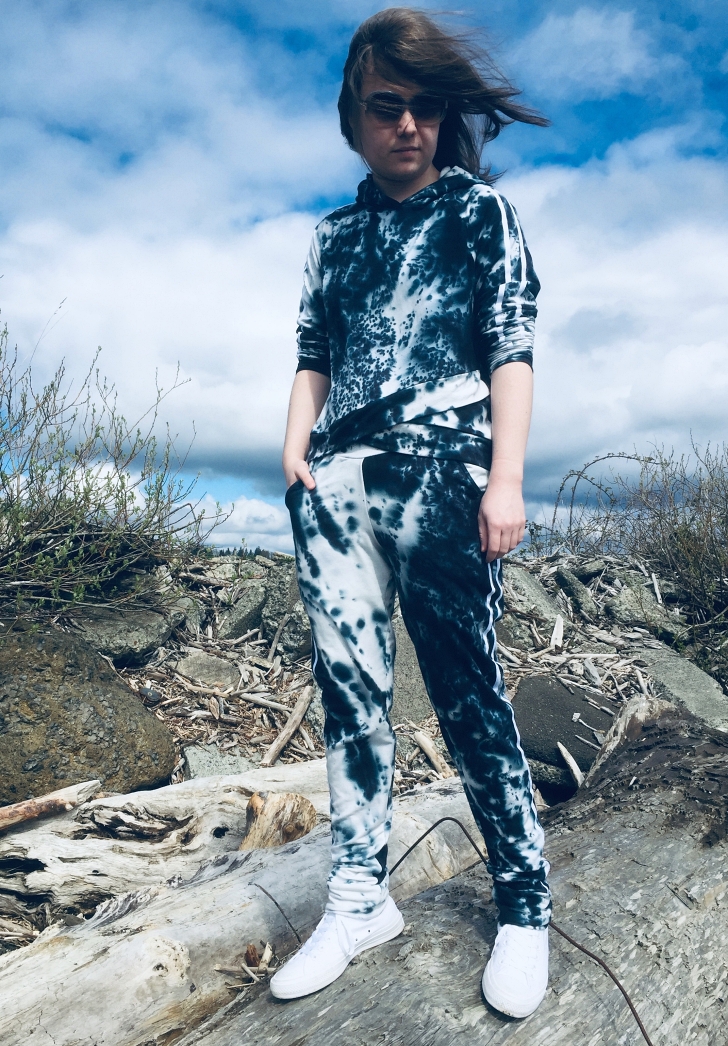How Tie-Dye Went from Ancient Art Form to Trendy Fashion
The 1960s were filled with color thanks to tie-dye.
Look up hippie Halloween costumes and you’ll find a great many of them start with a tie-dye t-shirt. Tie-dye clothing was once emblematic of the counterculture youth, with these clothing items being practically a uniform for Deadheads once upon a time. The simple technique of tying up a piece of cloth before applying dye was enhanced upon by artisans in the 1960s and 1970s, and spiral patterns in neon Day Glo colors became the signature of tie-dye for decades to come. Nowadays a simpler 2-tone tie-dye is trending on everything from sweatsuits to beach cover-ups to baby clothes. So, how did this ancient Eastern art become so popular?

Tie-Dye in the Ancient World
The oldest known examples of tie-dye have been found in Peru from around 100-200 BC, with newer examples from China in 5th or 6th century AD found in other parts of the world. But, this process appears to have independently originated in locales all over the globe including India, Japan, and parts of Africa.
One of the most storied traditions of tie-dye comes from Japan where shibori (“to press”) cloth is dyed deep hues of indigo with white peeking through the midnight blue background in pleasing geometric shapes.

Tie-dye (or tie and dye as it is sometimes called) is a resist technique of dyeing which means that areas of the cloth remain un-dyed after the process is complete, resulting in a pattern impregnated on the fabric.
Another example of a resist dyeing technique is batik in which wax is applied to the cloth, then the cloth is dyed, then the wax melted or peeled off to reveal the lighter color underneath. Tie-dye, with its extremely simple concept, is much less involved than even the most basic of batik designs.
The Hippies and Tie-Dye
With the hippie culture came a trend not just for all things Eastern, but also a strong do-it-yourself ethic. Dropping out of Western conventions not only meant embracing aspects of “exotic” cultures -from learning yoga to using tatami mats in one’s home to eating Persian food- but it also meant DIYing whatever you could.

It’s believed that Peace Corps volunteers returning from West Africa in the mid-1960s brought tie-dye fabrics back home to their counterculture friends, creating a trend that by the time of the 1969 Woodstock Festival was a must-have for performers like Janis Joplin and Joe Cocker.
A deviation from the usual office or factory work for young hippies during this era meant they were often strapped for cash and re-dyeing stained or mended clothing was an economical way to get the most wear from them.
However it wasn’t only the young, idealistic, and poor who loved tie-dye. There was a movement for homemakers to embrace more DIY techniques during this era as well and home crafting took off in the 1970s. Many homemakers experimented with home dyeing in fun patterns and it was a project that children could join in as well.

One guide from 1970 even suggested tie-dyeing one’s pantyhose to match the trend for this colorful new look.
Modern Tie-Dye
By the 1980s fractal art had greatly influenced the art world and beyond. The psychedelic colors and abstract patterns of fractal art was easily replicated in updated tie-dye patterns which featured as many colors as possible on one garment – giving new life to the humble tie-dye t-shirt. It was a common project for summer camps and public school classrooms alike and a whole new generation of kids got to experience the fun (and sometime disaster) of dyeing their own clothes.

Today, simpler designs with random splotches of dyed or bleached areas are the look that’s popular, with the overall effect leaning more towards clouds in the the sky than a bright attack on the senses. Tastes have changed over the decades, but there’s still something about tie-dye that’s both familiar and rebellious at the same time, making it a classic form of apparel not unlike the white t-shirt, blue jeans, black ballet flats, or leather motorcycle jackets in terms of perennial popularity.
SKM: below-content placeholderWhizzco for DOT

